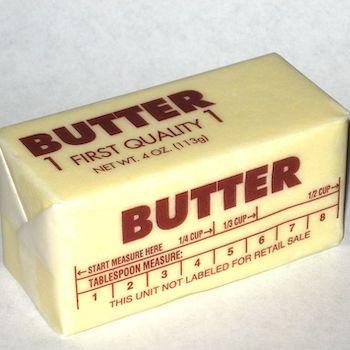It’s hard to overstate the keto diet fever that has been gripping the US. And it’s not just West and East coast, but all over. Yelp’s data analysis team identified Portland, Phoenix, Austin and Dallas as the top U.S. cities for restaurant reviews mentioning “keto”, while many nationwide chains, including Blaze Pizza and Chipotle, now offer keto-friendly menu choices.
While some normal people might use keto judiciously to shed a few pounds fast, it also has a host of weirdly tribal followers. At the extreme end (#ketolife #yes2meat, #LCHF and the various keto and carnivore Reddit pages), it’s a magnet for angry, shirtless white men spouting ill-informed nutrition zealotry (I put it kindly).
Of course just because there are many nutters in the keto community doesn't mean it isn’t a valid way of eating if it works for you and you take an informed opinion of the potential risks. But honestly? At the moment the hysteria isn't supported by the evidence.
What is keto?
Keto stands for ketogenic and it’s not just another Atkins, paleo or South Beach diet. Rather than being a low carb diet focusing on lots of protein, it’s an extremely low carb diet including lots of fat, but moderate protein, with the aim of forcing the body into ketosis.
Ketosis refers to when the body is so completely deprived of its primary fuel, glucose, that it’s forced to make ketone bodies, a substitute fuel that the liver produces from stored fat. Alongside ketosis, you’ll also get a fall in blood insulin levels, which is one of the diet’s attractions.
In fact, the ketogenic diet as a clinical tool definitely isn’t new: in the 19th century it was used to help control diabetes, and since the 1920s has been known as a useful treatment for epilepsy in children for whom medication is ineffective.
But when millions of the general public experiment with ketosis as a way to lose a few pounds we’re in completely new territory.
What do you eat on keto?
There’s no one ketogenic diet, but doing “keto” for weight loss generally means getting 70-80% of calories from fat, 5-10% of calories from carbohydrate, and 10-20% calories from protein. For a 2000-calorie diet, this translates to about 165 grams of fat, 40 grams of carbohydrate, and 75 grams of protein (eating too much protein can prevent ketosis as the amino acids it contains can get converted into glucose).
In terms of what you put on your plate, that’s basically a ridiculously small amount of carbs (keep in mind that a medium-sized banana has about 27 grams and you’ll be restricted to between 20 and 50 grams per day). So it’s no to bread, pasta, rice, cakes, cookies, potatoes, corn, pulses and foods with added sugar. Most ketogenic plans allow foods high in saturated fat, such as fatty cuts of meat, processed meat, lard, coconut oil and butter, as well as sources of unsaturated fats, such as nuts, seeds, avocados and oily fish. Some allow dairy, but not very much, and in most the only fruit you’re allowed is berries. Depending on your the keto diet you pick, food lists may conflict.
Various theories have been put forward as to why the keto diet helps people lose weight, but a hunger-suppressing effect of ketosis is likely to play a significant role in its popular appeal. Given you can’t eat a whole tasty food group you’re going to need not to have an appetite.
A ketogenic diet has been shown to be more effective than a low fat one for long term weight loss (12 months or longer follow up) and also at lowering triglycerides and blood pressure (though both LDL and HDL cholesterol rise). However, the differences are arguably clinically insignificant and adherence is poor – in most studies, carbohydrate intake was higher than allowed on a keto diet at the end of the study period.
The carbohydrate-insulin model of obesity and why it’s wrong
Low carb high fat (LCHF) extremists push the carbohydrate-insulin model of obesity, which asserts that obesity is caused solely by carbohydrates increasing insulin secretion, shuttling fat off into fat cells and making us flabby, sluggish and looking for the next sugar fix. They refuse to acknowledge any role of calories and also opine that fat cannot make you fat.
Keto diets do lower fasting insulin levels, which might be of real benefit to diabetics, as well as obese people with insulin resistance or prediabetes. But it’s an inconvenient truth for keto freaks that when calories are controlled, it matters not to fat loss whether your crispy bacon comes in a bun or without.
One study that illustrates this quite nicely involved researchers measuring fat loss in overweight and obese men in a metabolic ward who were given a high carb diet for four weeks followed by a ketogenic diet with the same amount of calories for another four weeks, Crucially, protein remained the same in both diets, as this macronutrient is known to increase energy expenditure.
The results? There was an equal fat loss between the diets, though the keto regimen did lower fasting insulin levels. The difference in carbohydrate intake was huge, with the keto diet providing 31 grams of carbs, and the high carb diet containing 300 grams (including 147 grams sugars).
Other evidence that weakens the carbohydrate-insulin model of obesity includes a huge swathe of animal data (e.g. this recent study) that strongly supports the conclusion that dietary fat is in fact more fattening than carbohydrate, including sugar.
For more reasons as to why the carbohydrate-insulin model for obesity is flawed, Dr Stephan J Guyenet’s rebuttal is way more in depth, informed and eloquent to anything I could write here.
Nutritional inadequacies
Historically those who have needed to follow a ketogenic diet for medical reasons have been given dietetic guidance to make sure the diet is nutritionally balanced. But out there in the Wild West of Keto Land, there is no such safety net and consequently some keto diets can be really unbalanced.
For a start they tend to have sky high levels of saturated fat, which can raise LDL cholesterol. Levels of fiber, which protects against bowel cancer, can be very low, as can intakes of calcium and potassium. The diet may also increase levels of oxalate and uric acid, which could respectively raise the risks of kidney stones gout, at least theoretically.
A version of the keto diet that is reasonably nutritionally isn’t impossible, but it involves a heck of a lot of planning and not much fun.
It's also worth noting that an observational study of more than 15,400 people from the Atherosclerosis Risk in Communities Study (ARIC) found that diets both low (< 40% energy) and high (>70% energy) in carbohydrates were linked with an increase in mortality, while moderate consumers of carbohydrates (50-55% of energy) had the lowest risk of mortality.
At its heart, keto is just another low carb diet, albeit one that’s a little more extreme than the others that have gone before it, with the long term effects unknown. While it may whittle the waistline for some, there’s no one-size-fits-all diet for everyone, no matter how much those in the keto cult try to preach otherwise.




